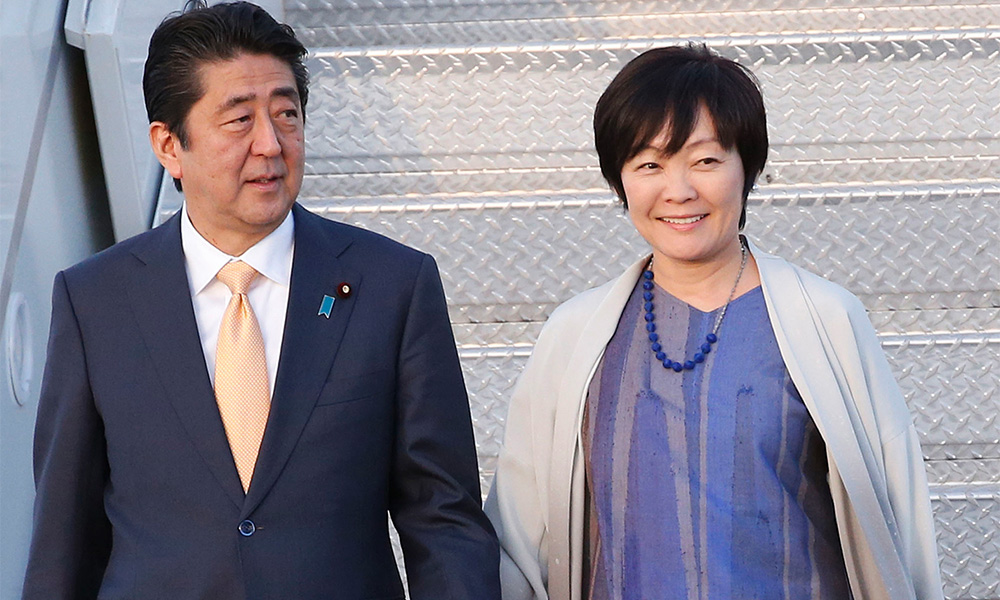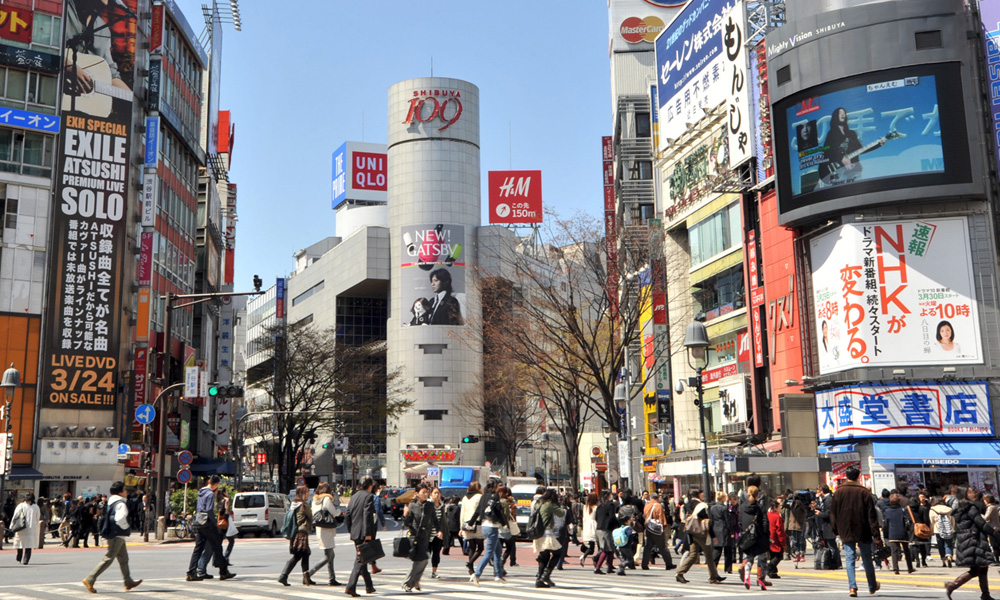COMMENT | When Dr Mahathir Mohamad introduced the Look East Policy in 1981, the goal was to imbibe Malaysian students and workers alike with the ethics of Japanese people, many of whom were disciplined, civil and thoughtful to a fault.
It was a template that was consistent with the Malay/Islamic, Chinese, Hindu and other Asian cultures within Malaysia. The Malaysian population was then a mere 14 million, however.
Fast forward to 2018, Mahathir is once again the doyen of Malaysia on the importance of looking east. This time around, the Malaysian population has more than doubled to 31.5 million, while that of Japan is shrinking and greying.
Thus in Looking East, there must be a real effort to deepen and broaden the engagement, without which the policy will have the feel and face of a Malaysia orientating to the East, when in fact Japan does not know how to reciprocate other than on a piecemeal basis.
What Malaysia wants from Look East Policy 2.0 is the support to become a developed country, not one that merely functions as a market to Japan.
If the latter is how Japan sees Malaysia – as a market – then the mere cancellation of any project, such as the Kuala Lumpur-Singapore High-Speed Railway, is immediately seen as a demerit to the relationship.
It should not be that way. After all, Look East 2.0 further implies Malaysia learning not from Japan alone, but South Korea too.
If Look East 2.0 needs a serious and substantial reboot, however, it has to be systemic and sub-systemic in every sense of the word.
In this sense, the nine-track diplomacy once conceptualised by former academics and diplomats Joseph Montville and John Burton, deserve some serious scrutiny, and could be the basis on which a stronger Japanese and Malaysian bilateral relationship begins.
Track 1 diplomacy
Track I diplomacy refers to the normal relationship between a government and another, involving various ministries. However, given the austerity drive and rationalisation exercises of Malaysia, to curtail the billowing national debt of RM 1.09 trillion, this relationship must not, and cannot, go overboard – invariably with ministers, central bankers and senior bureaucrats justifying all forms of visits to Japan like a junket.

This has been witnessed and done before, between 1981-2003, with very little yield. In fact, with the exception of Kedah Chief Minister Mukhriz Mahathir, who graduated from Sophia University, in Tokyo, almost no one in government has had any serious academic exposure in Japan.
Idris Haron, the former the Malacca chief minister would not count, despite being a graduate from a Japanese university – jas he like many others in Umno literally looked the other way, when the mega corruption scandals of 1MDB and others were engulfing the country from 2015 onwards.
A true graduate from Japan would have looked at the scandal with total shame. One that did not know how to react with moral outrage – as Japanese are known to do when confronted with corruption – has learned nothing regardless of her or his credentials.
If Look East 2.0 has any promise of all, it is this abiding sense of shame in all things shameful, especially corruption, malfeasance and abuse of power that includes the tendency to abuse the funds and powers of the public institutions.
Track 2 diplomacy
Track 2 diplomacy, which is promising – as it allows thinktanks entrusted by the prime minister and foreign minister to work closely with their Japanese or even South Korean counterparts – has all the potential to allow all sides to explore the various dimensions of new policies before they are implemented in full.
In Japan, the leading thinktank sponsored and embedded in the Japanese Ministry of Foreign Affairs would be the Japan Institute of International Relations (JIIA). Several Malaysian thinkers have been former fellows of JIIA.
They know Japan well, and have studied Japanese foreign policy at least since 1990, thus, giving Malaysia that understanding of how the inner sanctum of Japan works – especially in relation to the Six-party talks that were heavily promoted by Joseph Nye and Ezra Vogel at Harvard University.

A centre for the Look East Policy must be created to understand how Malaysia can learn from Japan and South Korea across the board. For instance, Masayoshi Son is a top entrepreneur, albeit of Korean-Japanese background. How did he make SoftBank such a powerful entity? How did SoftBank invest in China’s Ali Baba, and effectively control 36 percent of it?
Perhaps a Malaysian thinktank can work with the Mitsui thinktank, which has a headquarters in Singapore and a branch office in Kuala Lumpur, to devise common strategies together on how to move forward together.
One should also work closely with top Japanese experts like analyst Ayame Suzuki, whose specialty is Malaysia. She is at Doshisha University, one of the best universities in Kyoto.
Track 3 diplomacy
Track 3 diplomacy is no less powerful. Since the Kobe earthquake of 1995, NGOs in Japan have proven their worth. They can react fast, and well, to any contingencies. NGOs are also good in all forms of policy entrepreneurship too.
In Malaysia, one can observe the powerful role of Bersih, Tindak Malaysia and the Centre to Combat Corruption & Cronyism (C4) in ensuring a strong democracy, for instance.
Since the tsunami of March 11, 2011, Japanese NGOs have also raised their performance many times over, often complementing the state in areas where the government may be lacking, indeed, also morphing into anti-nuclear lobbies as well to speak of the dangers posed by the likes of the Daichi nuclear reactor in Fukushima.

Track 3 diplomacy between Japan and Malaysia, however, needs all the help that can be provided by the likes of Sasakawa Peace Foundation, Daiwa Foundation, even Chikyujin Japan, which helps Malaysian students to work and study in Japan.
Chikyujin Japan has an office in Kuala Lumpur, and students who go to Japan via the organisation will find themselves welcomed at the airports, and within a month, helped to find a job that pays within the income band of US$1,500 to US$1,700 a month.
The president of Chikyujin Japan, who is Dr Akinori Seki, met with Mahathir this year, and has received the support of the latter to take things further. Such efforts must be continued.
Track 4 diplomacy
Track 4 diplomacy involves faith-based organisations, regardless of their religious orientations, working hand in hand with each other to improve mutual understanding.
The late Toshiko Izutsu used to write major tracts on Islam and Taoism, and is a perfect example of how a Japanese scholar is able to help two countries overcome their seeming indifference to one another.
Japanese Buddhist organisations, such as the Soka Gakkai International led by Ikeda Daisuke, have some adherents in Malaysia. Such interfaith dialogue can do much to enhance the bilateral relationship of Malaysia and Japan.
Many Japanese Muslims are also top Islamic scholars and Arab specialists. One can invite them to speak in Malaysia on Japanese issues. This shows the interconnectivity of Islam and Japan, which the likes of Shumei Okawa and Okakura Kakuzo tried to do in the early 1900s with the concept of Pan-Asianism.
Track 5 diplomacy
Track 5 diplomacy involves tourism. Sister city collaboration can be fostered between Putrajaya and Kasumigaseki, where Japanese ministries are located. AirAsia and other budget airlines in Japan, spawned by Japan Airlines and All Nippon Airways, can also restore more flights to Malaysia, especially from Kota Kinabalu and Penang.

The flight times are all within a radius of six hours anyway; the distance between mainland Japan to Hawaii Island in the Pacific. If Japanese can easily fall in love with Hawaii, there is no reason why they cannot have the same affection for Malaysia.
Track 6 diplomacy
Track 6 diplomacy involves more intensive training and connection to Japanese universities, and if need be, South Korean ones too, since knowledge must be universally shared.
Waseda University in Japan, for which Mahathir received an honorary doctorate in 2006, for example, has numerous programs to allow Malaysians, even Malaysian diplomats, to study at their Graduate School of Asian Pacific Studies (GSAP).
The courses on Japan are done in English, reducing the jarring experiences of having to learn Japanese from scratch. In fact, Japanese universities are increasingly turning to the use of English as a medium of instruction.
Sophia University, International Christian University, Ritsumeikan Asian Pacific University, University of Tsukuba, University of Tokyo and International University of Japan all have courses delivered in English.
And those who want to specialise in the Japanese language can also spend one and a half to two years in Japan, or, potentially in some of the language schools in Malaysia first. And, one must remember to Look East involves learning from South Korea too, if need be, since the latter has caught up with Japan in many areas of scientific knowledge and technical expertise.
Track 7 diplomacy
Track 7 diplomacy is delicate but doable. Japanese musicians should perform in Malaysia beyond the likes of Japan Foundation in Kuala Lumpur and embassy hosting special screenings of some Japanese movies.
Top singers like Sheila Majid have also performed to sell-out crowds in Japan. If a singer can do in Japan what Shila Amzah did in China, the cultural bonding will be deep. It gets deeper when tens of thousands of young Malaysians are into anime and cosplay too.
Track 8 diplomacy
Track 8 diplomacy involves political parties from both countries. More has to be invested in this area. Without political parties knowing one another, the collegiality that is needed to build a strong nine track relationship may be missing. Allowing politicians to know one another is also a start of enhancing the government-to-government relationship, even if some of them have not been elected into office.
Track 9 diplomacy
Lastly, Track 9 diplomacy involves businesses tying up with one another. All companies that fall under the Federation of Manufacturers (FMM), perhaps even the Malaysian Business Council (MBC), can do much to strengthen their relationship with the all-powerful Keidanren, or Japan Business Federation.
Members of Keidanren should visit Malaysia with a clear-eyed perspective of how they can help. Research of Malaysian companies can also be done by the Japanese Speeda news service.
Regardless of what Mahathir and Japanese Prime Minister Shinzo Abe agree on June 11, the element of reciprocity must he there. Additionally, Malaysia always reserves the right to reach out to China.
But if Japan wants a sympathetic ear to China, Malaysia will do its best to encourage Beijing to create a modus vivendi in Asia Pacific where everyone gains, and the South China Sea remains a global common.
It must also be said that Malaysia should pursue some type of soft loans with Japan given their interest rates are significantly lower than that of other sources of loans.
If these loans are obtained, then Malaysia can truly embark on a holistic loan rationalisation programme where the current national loans/debts that has high interests rates can be retired with the significantly lower interest rate soft loans sourced from Japan.
If anybody can do it with the Japanese, it can only be Mahathir, given his close relationship with Japan, without sacrificing Malaysia’s interests.
Let us wish Mahathir all the best with his working visit to Japan for the next three days and return with great news of enlightened and enhanced, bilateral and governmental ties between Malaysia and Japan based on mutual interest and respect.
Ganbatte Kudasai Mahathir-san !
RAIS HUSSIN is a supreme council member of Bersatu and heads its policy and strategy bureau.
The views expressed here are those of the author/contributor and do not necessarily represent the views of Malaysiakini.

